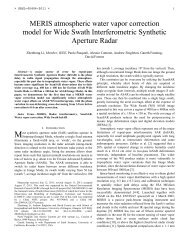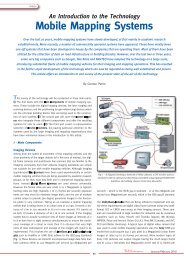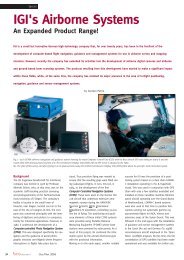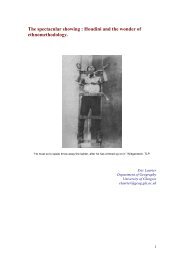Scottish Road Network Landslides Study - University of Glasgow
Scottish Road Network Landslides Study - University of Glasgow
Scottish Road Network Landslides Study - University of Glasgow
You also want an ePaper? Increase the reach of your titles
YUMPU automatically turns print PDFs into web optimized ePapers that Google loves.
EXECUTIVE OVERVIEW<br />
INTRODUCTION<br />
‘The surface <strong>of</strong> the land is made by Nature to decay….<br />
Our fertile plains are formed from the ruins <strong>of</strong> the mountains’.<br />
James Hutton, 1785<br />
In August 2004 a series <strong>of</strong> landslides in the form <strong>of</strong> debris flows occurred in Scotland. Some<br />
<strong>of</strong> these affected the A83, A9 and A85, which form part <strong>of</strong> the trunk road network. These<br />
incidents were well reported in the media.<br />
While debris flows occur with some frequency in Scotland, they only rarely affect the trunk<br />
road network or for that matter the main local road network. However, when they do impact<br />
on the road network the degree <strong>of</strong> damage, in terms <strong>of</strong> the infrastructure and the loss <strong>of</strong> utility<br />
to road users, can have a major detrimental effect on both economic and social aspects <strong>of</strong> the<br />
use <strong>of</strong> the asset. Additionally, there is a high potential for such events to cause serious injury<br />
and even loss <strong>of</strong> life although, fortuitously, such consequences have been limited to date.<br />
The events <strong>of</strong> August 2004 followed a sustained period <strong>of</strong> heavy rainfall and, in addition,<br />
intense localised storms contributed to the triggering <strong>of</strong> at least some <strong>of</strong> the resulting debris<br />
flows. Rainfall <strong>of</strong> up to 300% <strong>of</strong> the monthly average fell in certain parts <strong>of</strong> Scotland during<br />
August 2004.<br />
Within the recent past, debris flow activity in Scotland has occurred largely in the periods<br />
July to August and November to January, but there is no certainty that such a pattern will be<br />
continued in the future. However, eastern parts <strong>of</strong> Scotland do receive their highest levels <strong>of</strong><br />
rainfall in August. Additionally, climate change models indicate that rainfall levels will<br />
increase in the winter but decrease during the summer months but that intense storm events<br />
will increase in number. These factors, therefore, may change both the frequency and the<br />
annual pattern <strong>of</strong> debris flow events.<br />
The impacts <strong>of</strong> such events are particularly serious during the summer months due to the<br />
major contribution that tourism makes to Scotland’s economy. Nevertheless, the impacts <strong>of</strong><br />
debris flow events during the winter months should not be underestimated.<br />
OBJECTIVES<br />
Following the events <strong>of</strong> August 2004, the need to act was recognised by the <strong>Scottish</strong><br />
Executive and this study was commissioned to take stock <strong>of</strong> the present situation on the trunk<br />
road network and to determine a sustainable approach to the management <strong>of</strong> such occurrences<br />
in the future.<br />
This study, termed <strong>Study</strong> 1, comprises two parts and it is Part 1 that is reported here. Part 1<br />
deals with the following activities:<br />
Considering the options for undertaking a detailed review <strong>of</strong> side slopes adjacent to the<br />
trunk road network and recommending a course <strong>of</strong> action.<br />
4

















